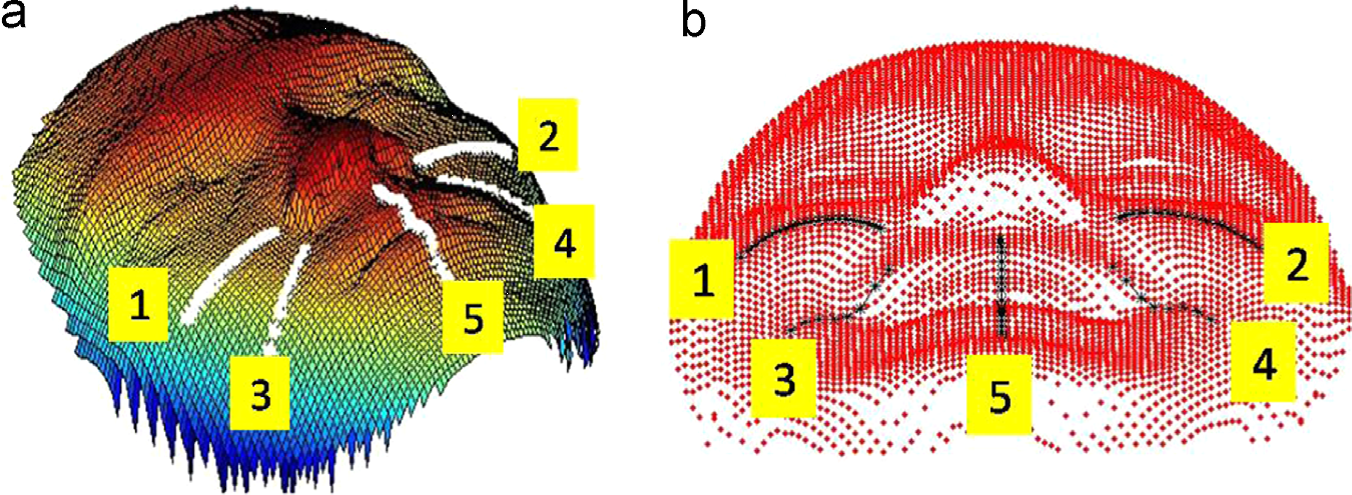Autism Spectrum Disorders (ASD) can impair non-verbal communication including the variety and extent of facial expressions in social and interpersonal communication. These impairments may appear as differential traits in the physiology of facial muscles of an individual with ASD when compared to a typically developing individual. The differential traits in the facial expressions as shown by facial muscle-specific changes may be measured visually, but this may not discern the subtlety in facial oddity distinctive to ASD. Earlier studies have used intrusive electrophysiological sensors on the facial skin to gauge facial muscle actions from quantitative physiological data. In an Institutional Review Board approved pilot study conducted on children with ASD and an age-matched control group, we demonstrate for the first time in the literature, novel quantitative measures for facial oddity recognition using non-intrusive facial imaging sensors such as video and 3D optical cameras.
We develop a novel Frenet frame-based generalized space curve representation method for 3-D pose-invariant face and facial expression recognition and classification, and propose a novel method where a small set of 3D curves related to different facial muscle regions is automatically extracted for analysis. The proposed computational techniques and statistical analyses reveal higher mean of actions in the facial muscles of the ASD group versus the control group in response to visual stimuli. The facial muscle-specific evaluation reveals intense yet asymmetric facial responses as facial oddity in participants with ASD. This finding about the facial oddity may objectively define measurable differential markers in the facial expressions of individuals with ASD.

Five 3D facial curves and their locations. 1= Zygomaticus Major Right (ZMR), 2= Zygomaticus Major Left (ZML), 3=Orbicularis Oris (OrOr), 4=Levator Anguli Oris Right (LAOR), and 5= Levator Anguli Oris Left (LAOL). (a) Five facial curves on a mesh representation of a 3D face and (b) on a topological view of a 3D facial point cloud.
